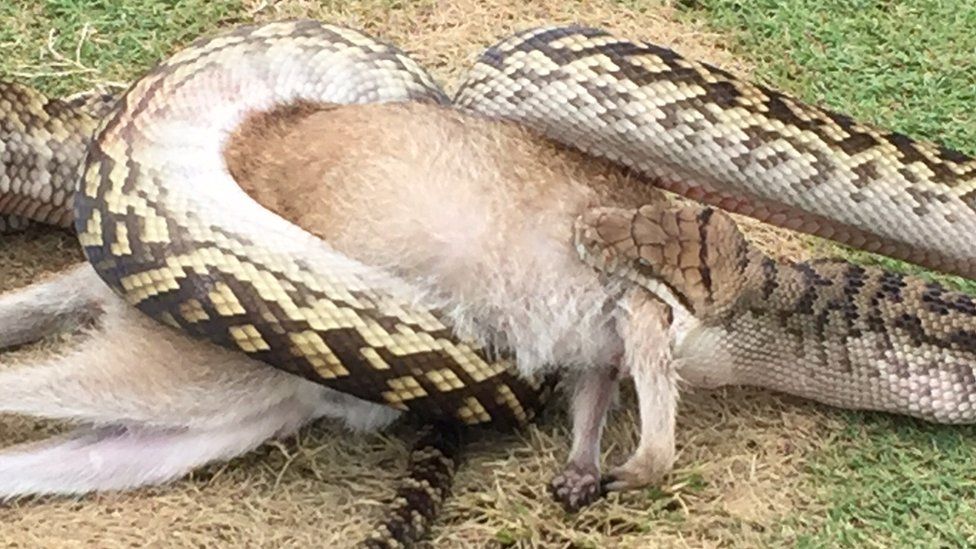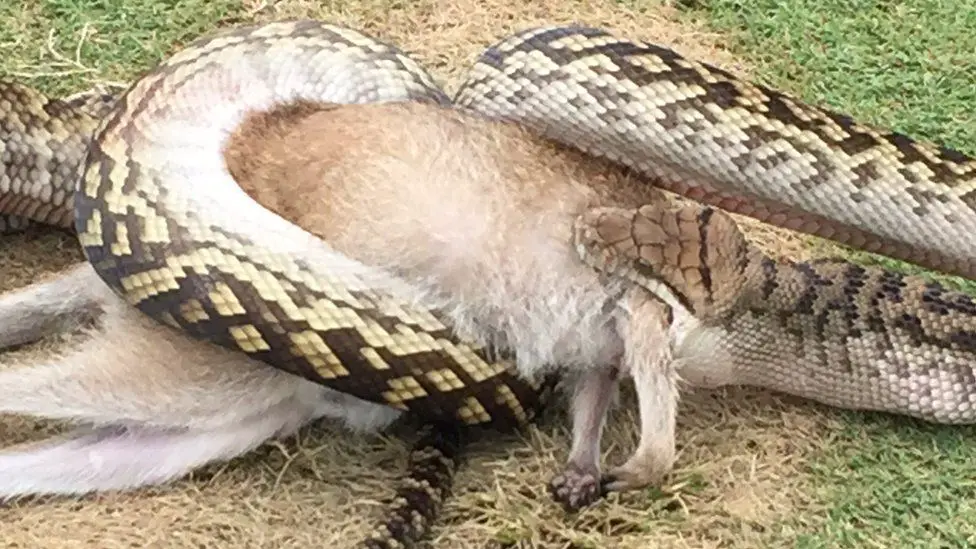Burmese pythons are one of the largest snakes in the world, known for their massive size and powerful constriction abilities. With their intimidating reputation, it’s no wonder people wonder if these snakes pose a threat to humans.
So, do Burmese pythons eat humans? In this article, we will delve into the facts and myths surrounding these giant snakes and their potential danger to humans.
Burmese pythons have been known to attack and kill humans, although such incidents are rare. These massive snakes, which can reach lengths of up to 23 feet, are not venomous but use their powerful bodies to constrict and suffocate their prey. Humans are not a natural prey for Burmese pythons, but attacks can occur if the snake feels threatened or is hungry.

Do Burmese Pythons Eat Humans?
Burmese pythons are among the largest snakes in the world, and they are known for their ability to swallow prey whole. This has led many people to wonder whether these massive reptiles are capable of eating humans. While there have been cases of pythons attacking people, such incidents are rare, and fatal attacks are even rarer.
Physical Characteristics of Burmese Pythons
Burmese pythons are native to Southeast Asia, and they can grow to be as long as 23 feet and weigh as much as 200 pounds. They have a distinctive pattern of brown patches on a tan or yellow background, which helps them to blend in with their surroundings. Burmese pythons are constrictors, meaning that they kill their prey by squeezing them until they suffocate. They have sharp teeth and powerful jaws that allow them to hold onto their prey while they wrap their bodies around it.
Despite their size, Burmese pythons are not venomous. Instead, they rely on their strength and size to overpower their prey. They are opportunistic feeders, and they will eat almost anything that they can catch, including rodents, birds, and small mammals.
Are Burmese Pythons Dangerous to Humans?
While Burmese pythons are not venomous, they can still pose a danger to humans. In the wild, pythons will generally avoid people if they can, but if they feel threatened, they may attack. There have been several instances of pythons attacking humans, but such incidents are rare. Fatal attacks are even rarer, with only a handful of documented cases.
In most cases, attacks occur when humans get too close to a python’s territory or accidentally stumble upon one. The best way to avoid an attack is to give pythons plenty of space and avoid disturbing them.
What Should You Do if You Encounter a Burmese Python?
If you encounter a Burmese python in the wild, the best thing to do is to back away slowly and give the snake plenty of room. Do not try to approach or capture the snake, as this could provoke an attack. If you see a python in a residential area, contact your local wildlife authorities for assistance.
Burmese Pythons as Pets
Burmese pythons are sometimes kept as pets, but they require a lot of care and can be dangerous if not handled properly. In some states, it is illegal to keep Burmese pythons as pets due to their potential to become invasive species. These snakes can live for up to 20 years, and they require a large enclosure with plenty of space to move around. They also require a specific temperature and humidity range to stay healthy.
Benefits of Burmese Pythons
Burmese pythons play an important role in the ecosystem as predators of small mammals and birds. They help to control populations of rodents and other small animals, which can be beneficial for farmers and gardeners. In addition, their skins are used to make leather products, and their meat is considered a delicacy in some parts of Southeast Asia.
Burmese Pythons Vs. Other Large Snakes
Burmese pythons are often compared to other large snakes, such as anacondas and reticulated pythons. While these snakes are similar in size and feeding habits, they have different physical characteristics and habitats. Anacondas are found in South America and are known for their aquatic lifestyle, while reticulated pythons are found in Southeast Asia and have distinctive diamond-shaped patterns on their skin.
Conclusion
In conclusion, while Burmese pythons are capable of eating humans, such incidents are rare. These snakes are important predators in their ecosystem, and they play a valuable role in controlling populations of small mammals and birds. If you encounter a Burmese python in the wild, it is best to give the snake plenty of space and avoid disturbing it. If you are considering keeping a Burmese python as a pet, be sure to research their care requirements thoroughly and make sure it is legal in your state.
Frequently Asked Questions
Here are some common questions people have about Burmese Pythons and their eating habits.
What do Burmese Pythons typically eat?
Burmese Pythons are carnivores and typically eat small mammals, birds, and reptiles. They are known to be opportunistic predators and will prey on anything they can overpower.
However, it is important to note that Burmese Pythons are not native to Florida and their introduction to the ecosystem has caused significant harm to local wildlife populations.
Can Burmese Pythons eat humans?
While there have been rare cases of large constrictor snakes killing humans, it is highly unlikely that a Burmese Python would attempt to eat a human. These snakes are not natural predators of humans and would typically only attack if they feel threatened or cornered.
It is important to remember that Burmese Pythons are wild animals and should be treated with caution and respect. If you encounter one in the wild, it is best to keep your distance and observe from a safe distance.
How often do Burmese Pythons eat?
The frequency of a Burmese Python’s feeding depends on various factors such as their age, size, and environment. Younger snakes may eat more frequently than older ones, and those living in captivity may have more regular feeding schedules than those in the wild.
Generally, Burmese Pythons can go weeks or even months without eating after a large meal. This is because they have slow metabolisms and use their energy efficiently.
What happens after a Burmese Python eats?
After a Burmese Python eats, it will typically find a warm and secure location to digest its meal. The snake’s digestive process can take several days to several weeks depending on the size of the meal and the snake itself.
During this time, the snake will not be as active and may appear lethargic. It is important to give the snake space and allow it to digest its meal in peace.
Are Burmese Pythons dangerous to humans?
Burmese Pythons can be dangerous to humans if they feel threatened or provoked. These snakes are powerful constrictors and can cause serious harm to a person if they are not handled properly.
It is important to remember that Burmese Pythons are wild animals and should not be kept as pets. If you encounter one in the wild, it is best to keep your distance and observe from a safe distance.
10 Humans Found Inside Snakes!
In conclusion, there is no concrete evidence to suggest that Burmese pythons eat humans on purpose. While there have been a few reported cases of humans being attacked by these large snakes, they are extremely rare and often occur when the snake mistakes the human for prey.
While it is important to exercise caution when in the presence of any wild animal, including Burmese pythons, it is also important to remember that these snakes play an important role in their ecosystem. They help to control populations of smaller animals and are a vital part of the food chain in their native habitats.
In the end, it is always best to approach these magnificent creatures with respect and caution, and to appreciate them for the important role they play in our world. So, while Burmese pythons may be intimidating, they are not to be feared and certainly not to be vilified as man-eaters.


